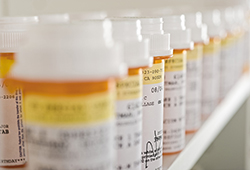Potential AI/ML Learnings to Come from FDA Public Advisory Committee Meeting on Skin Lesion Analyzer Technology in Late July
 On July 28, 2022, the U.S. Food and Drug Administration (FDA) will hold a public advisory committee meeting to discuss skin lesion analyzer (SLA) technology and its application to detecting skin cancers in various patient care settings. This meeting of the General and Plastic Surgery Devices Panel of the Medical Devices Advisory Committee will focus on algorithm-based SLA devices for adjunctive detection of skin lesions, including skin cancers, and stands to provide industry another layer of thinking on FDA’s perspective on artificial intelligence and machine learning (AI/ML) device technologies.
On July 28, 2022, the U.S. Food and Drug Administration (FDA) will hold a public advisory committee meeting to discuss skin lesion analyzer (SLA) technology and its application to detecting skin cancers in various patient care settings. This meeting of the General and Plastic Surgery Devices Panel of the Medical Devices Advisory Committee will focus on algorithm-based SLA devices for adjunctive detection of skin lesions, including skin cancers, and stands to provide industry another layer of thinking on FDA’s perspective on artificial intelligence and machine learning (AI/ML) device technologies.
In announcing this meeting, FDA explained that in recent years it has observed an increased interest in SLA devices employing AI/ML. The agency is seeking expert input from the panel on approaches to evaluate the performance of SLA devices, which have a range of technologies and indications.
The committee will discuss and provide recommendations to FDA on: (1) the diagnosing standard, or ground truth, that should be used as a comparison for the performance of diagnostic devices, e.g., histology, consensus opinion of a panel of dermatologists, opinion of a single dermatologist, or other means; (2) acceptable sensitivity and specificity thresholds based on the target diagnosis (melanoma, basal cell carcinoma, squamous cell carcinoma) or intended user (dermatologist, primary care physician, lay user); (3) patient characteristics, including lower or higher incidence populations, that should be tested before marketing; and (4) the balance of increased access with risk mitigation measures that are appropriate when the devices are used by lay people, by populations with very high or very low incidence of melanoma, by populations with low incidence, but high mortality associated with melanoma, or by the target diagnosis/lesion type.
Additionally, on July 29, 2022, the committee will discuss the possible reclassification of two class III, PMA approved computer-aided melanoma detection devices, MelaFind (P090012) and Nevisense (P150046), both of which are intended for use on cutaneous lesions suspicious for melanoma when a dermatologist chooses to obtain additional information when considering biopsy. According to the FDA announcement, “The committee will discuss if there is sufficient information to reclassify computer-aided devices for adjunctive diagnostic information of lesions suspicious for melanoma from class III to class II, and what special controls may be appropriate to provide reasonable assurance of safety and effectiveness” if they are reclassified.
This meeting, and any actions the FDA takes as a result, could offer industry further insight into the FDA’s approach to regulating AI/ML diagnostic and screening products more broadly.
The meeting will be held virtually on July 28, 2022, from 9 am to 5:45 pm ET and July 29, 2022, 9 am to 4 pm ET. Comments received on or before July 11, 2022 will be provided to the committee and the public docket will remain open for comment for FDA’s consideration until August 29, 2022.
For more information see the Meeting Notice on the Federal Register.


 During the COVID-19 public health emergency, the United States Food and Drug Administration (FDA) has issued hundreds of Emergency Use Authorizations (EUAs) and numerous enforcement policies to facilitate the availability of important medical devices. On December 23, 2021, FDA published two draft guidances setting forth the Agency’s proposed process for transitioning the multitude of devices brought to market under these circumstances to full compliance with FDA requirements:
During the COVID-19 public health emergency, the United States Food and Drug Administration (FDA) has issued hundreds of Emergency Use Authorizations (EUAs) and numerous enforcement policies to facilitate the availability of important medical devices. On December 23, 2021, FDA published two draft guidances setting forth the Agency’s proposed process for transitioning the multitude of devices brought to market under these circumstances to full compliance with FDA requirements: On January 19, 2021, the FDA issued
On January 19, 2021, the FDA issued  When submitting a new drug application (“NDA”) with the FDA, an applicant (or branded company) is required to file a list of patents that cover the drug product. These patents will be listed in the FDA’s Orange Book upon approval of the drug for commercial sale. Patents that are eligible to be listed in the Orange Book are patents that have claims that cover the drug substance (active ingredient), the drug product (formulation and composition), or the approved method of use.
When submitting a new drug application (“NDA”) with the FDA, an applicant (or branded company) is required to file a list of patents that cover the drug product. These patents will be listed in the FDA’s Orange Book upon approval of the drug for commercial sale. Patents that are eligible to be listed in the Orange Book are patents that have claims that cover the drug substance (active ingredient), the drug product (formulation and composition), or the approved method of use.

 What financial arrangements between clinical trial sponsors and clinical investigators must be disclosed in a drug, biologic or device marketing application?
What financial arrangements between clinical trial sponsors and clinical investigators must be disclosed in a drug, biologic or device marketing application?